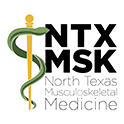Tendinitis and Tendinopathy
The complex structure of ligaments and tendons that support our joints provides stability. They are composed of collagen, the most abundant protein in the body. Their tough, collagenous structure give the joint strength. This structure, however, also causes these tissues to have poor blood supply, making the joint prone to chronic conditions.

